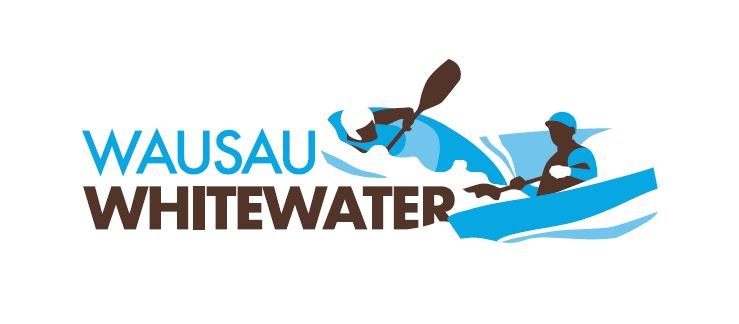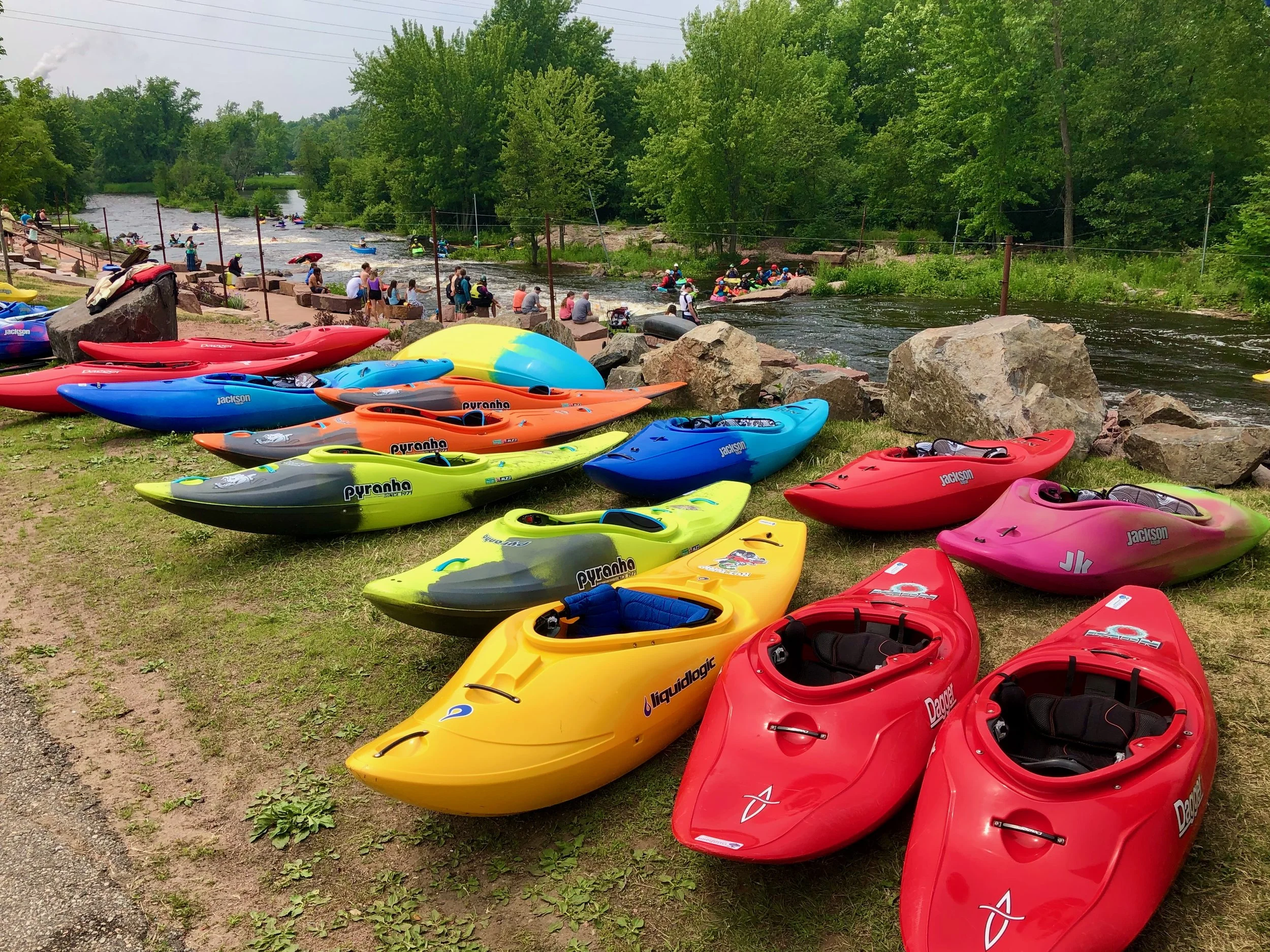whitewater park questions
General whitewater Paddling questions:
The internet provides a great resource for learning about whitewater kayaking. We’ll just scratch the surface with some basics here.
———————————————————-—
Whitewater Difficulty
Difficulty of whitewater rivers are rated by the term “Class” and range from Class I-VI (1-6). But there are variations within each class, for instance, there can be a difficult class two “II+” or an easy class three “III-” .
Classes can change with the amount of water flow. For instance if there are heavy rains there will be more water flow and the class could increase. Certain sections of a river and individual rapids can also have unique classes. This means some river sections could be reserved for experts while other areas will be suitable for beginners.
Wausau Whitewater Park has features that are Class I-III.
_______________________________________________________
Whitewater Terminology
Eddies – Eddies are areas of current on a river created behind a rock or other obstruction, that actually move upstream. They are considered great places for kayakers to stop and take a break or to scout out the upcoming sections of the rapids.
Kayak roll – A kayak roll is a maneuver done to right a capsized kayak. This is achieved by lifting the torso up towards the surface of the water and snapping the hips to right the kayak.
Holes – Holes are areas of a river where the water on the surface flows upstream. Typically below the surface the water will flow downstream. This creates a hydrolic cycle effect. The holes at Wausau Whitewater Park are safe, fun and are used by freestyle kayakers for surfing and tricks.
Playspot – A place where there are surfable features on rivers, such as waves or holes, is referred to as a playspot. Often whitewater parks are also called “play parks”.
_______________________________________________________
What is Slalom?
The goal of whitewater slalom is to race a canoe or kayak downriver while navigating through a course of gates (poles) that are hung over different rapids. The racer with the fastest overall time wins. Racers are grouped into classes: men’s and women’s kayak - seated with two paddle blades (K1 & K1W), men’s and women’s canoe - kneeling with one paddle blade (C1 & C1W) and men’s double canoe (C2). Most of the equipment is made of hi-tech composite carbon fiber ensuring that it is light but strong.
Learn More Here
_______________________________________________________
What is Freestyle?
A freestyle kayaking competition consists of paddlers from beginners to experts performing tricks on a wave or in a hole. Each paddler has a specific amount of time to perform as many tricks as possible. The amount of time depends on the particular competition event’s rules. The score is determined by the variety of tricks performed and the difficulty level and technical execution of the tricks.
Learn More Here
_______________________________________________________
Canoe Or Kayak?
When it comes to whitewater paddling the difference between a canoeist and a kayaker is not about the boat but rather the type of paddle and the seating position.
A kayaker uses a double-bladed paddle and in a kayak your legs are outstretched.
A canoeist is most commonly seen in an open boat, however, many whitewater canoeists paddle boats very similar to kayakers. The difference is that a canoeist paddles with a single-bladed paddle and “sits” in a kneeling position.

